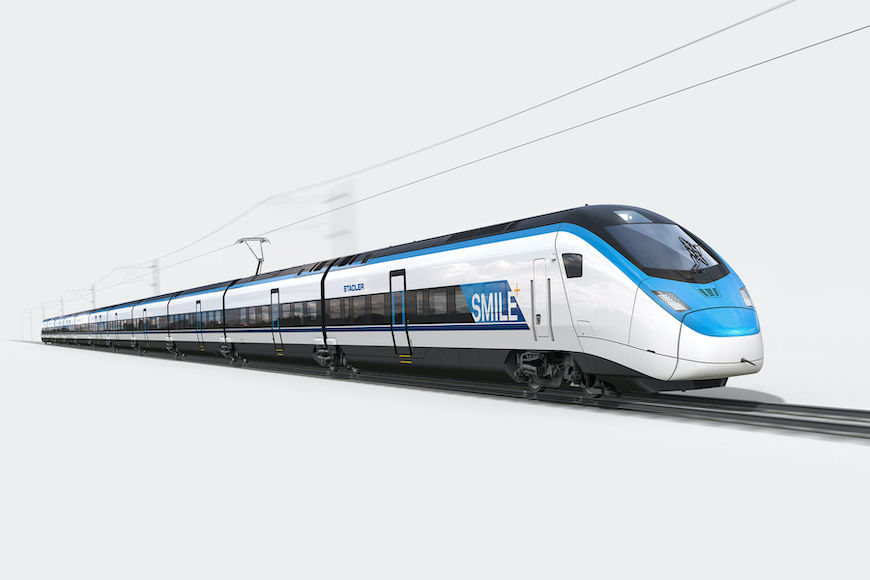Stadler Presents New FLIRT Akku for the First Time
The media got to see the FLIRT Akku, the battery-powered version of Stadler’s FLIRT series, for the first time last week. It is both energy-efficient and quiet. In addition, it is flexible as it can be deployed on routes that are not fully electrified and even on routes that are not electrified at all.

Currently still a prototype, the FLIRT Akku completed a trip from the Stadler premises in Berlin Pankow to Schildow without the need for any external power. The standard FLIRT has received homologation more than 1000 times. This FLIRT Akku contains all the features of its regular counterpart combined with its alternative drive system. Most of the traction equipment and the key mechanical components remain the same; however, the whole powertrain was rebuilt and fitted with a battery drive.
Steffen Obst, Head of Sales Stadler Germany, said:
“This concept has allowed us to significantly reduce the development and approval times, and to ensure a high level of reliability even with the test carrier.
“We at Stadler continuously strive to improve the rail traffic sector by implementing good technical ideas quickly and practically to reduce and eliminate emissions, and hopefully encourage more people to travel by train. We are extremely pleased that we developed the FLIRT Akku, which is precisely such an environmentally friendly flexible vehicle.”
There are several ways in which the batteries can be charged: during operation along electrified stretches, at non-electrified end stops and through regenerative braking. The configuration presented to the media had space for 310 passengers, of which 154 spaces were seating.
Stadler’s FLIRT Akku vs. Bombardier’s TALENT 3
Stadler, who developed the vehicle in-house, received two million euros of funding from the German government. The current FLIRT Akku has a range of 80km at a speed of up to 140km/h. That means eighty percent of Germany’s non-electrified routes can be serviced by this vehicle. By comparison, Bombardier’s battery-operated TALENT 3, recently unveiled, has a range of 40km, though the company says this will increase to 100km in 2019. And like Stadler, Bombardier received four million euros in funding from the German government (in 2016) to advance its electro-mobility programme.
Importance of Battery Range: Stadler’s FLIRT BMU for Greater Anglia
By contrast, Stadler recently unveiled its bi-mode (electric-diesel) FLIRT for Greater Anglia (U.K.) at InnoTrans 2018. When asked why Greater Anglia went for a diesel-electric option rather than a battery-electric option to bridge the non-electrified gaps in the network, Railway-News was told that the non-electrified distances in the U.K. are currently too great for battery-operated trains to cope with. As battery technology improves, this will hopefully change, making diesel and the need for electrification obsolete.
Future Markets
The FLIRT Akku prototype has been approved for passenger service. It will start operations on selected routes in 2019. Stadler believes its battery-operated offering has market potential in Germany, Austria, Great Britain, the Netherlands and Italy as well as in other countries where substantial proportions of the rail network have not yet been electrified.

